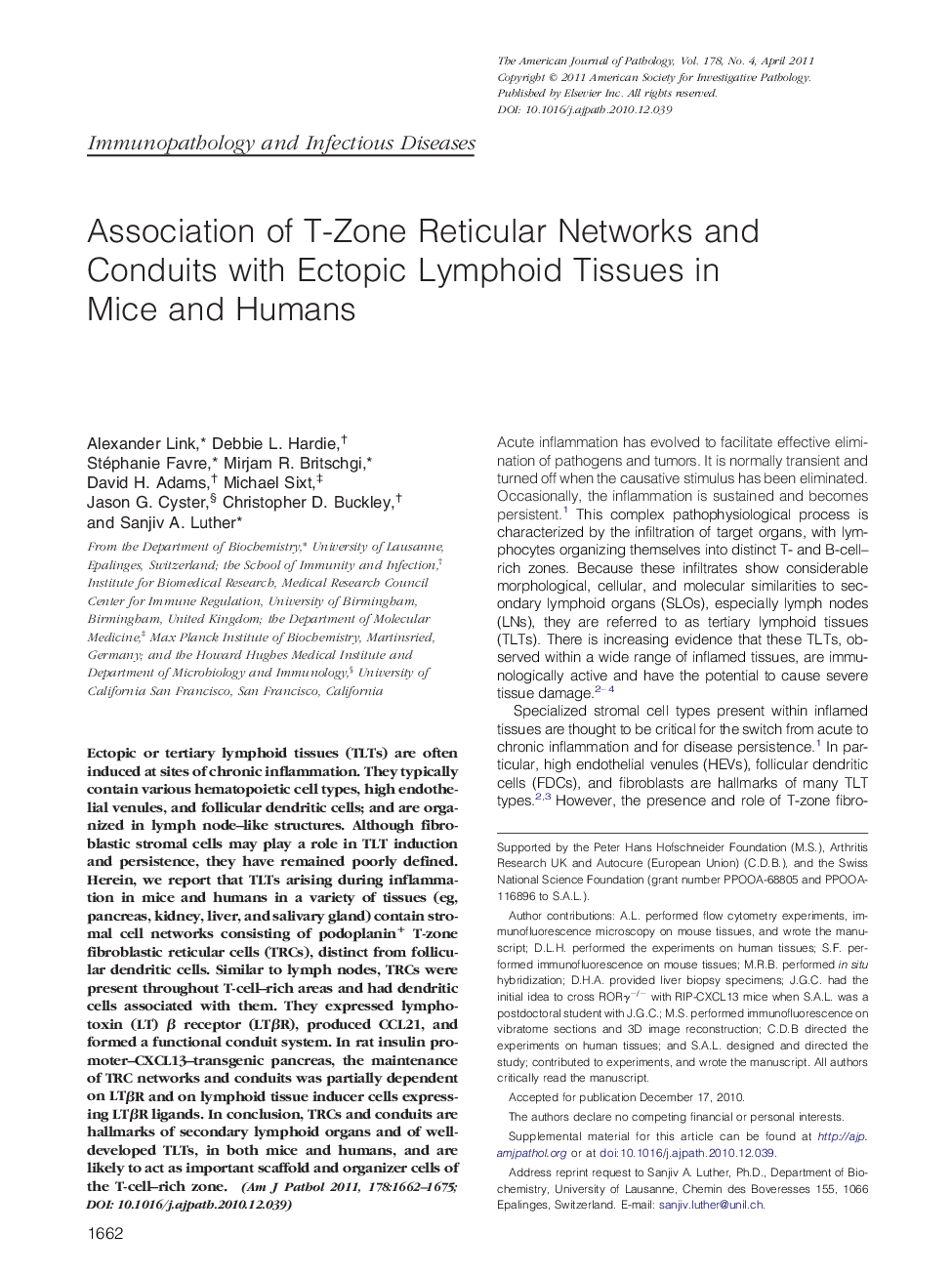| کد مقاله | کد نشریه | سال انتشار | مقاله انگلیسی | نسخه تمام متن |
|---|---|---|---|---|
| 5936053 | 1573431 | 2011 | 14 صفحه PDF | دانلود رایگان |

Ectopic or tertiary lymphoid tissues (TLTs) are often induced at sites of chronic inflammation. They typically contain various hematopoietic cell types, high endothelial venules, and follicular dendritic cells; and are organized in lymph node-like structures. Although fibroblastic stromal cells may play a role in TLT induction and persistence, they have remained poorly defined. Herein, we report that TLTs arising during inflammation in mice and humans in a variety of tissues (eg, pancreas, kidney, liver, and salivary gland) contain stromal cell networks consisting of podoplanin+ T-zone fibroblastic reticular cells (TRCs), distinct from follicular dendritic cells. Similar to lymph nodes, TRCs were present throughout T-cell-rich areas and had dendritic cells associated with them. They expressed lymphotoxin (LT) β receptor (LTβR), produced CCL21, and formed a functional conduit system. In rat insulin promoter-CXCL13-transgenic pancreas, the maintenance of TRC networks and conduits was partially dependent on LTβR and on lymphoid tissue inducer cells expressing LTβR ligands. In conclusion, TRCs and conduits are hallmarks of secondary lymphoid organs and of well-developed TLTs, in both mice and humans, and are likely to act as important scaffold and organizer cells of the T-cell-rich zone.
Journal: The American Journal of Pathology - Volume 178, Issue 4, April 2011, Pages 1662-1675